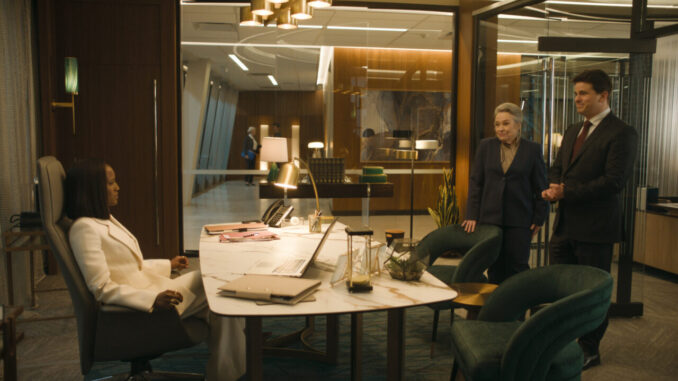
The Silent Dance of Grief and Acceptance: Kathy Bates on Matty and the Last Dance in Matlock’s MD07
The world of television is often built on the foundation of familiarity, comfortable formulas that offer predictable comfort. But sometimes, a single episode can rise above the ordinary, etching itself into the collective memory through its poignant exploration of universal human experiences. Such is the case with “Matlock” MD07, also known as “The Last Dance,” an episode celebrated not only for its courtroom drama but for its deeply moving portrayal of grief, acceptance, and the enduring power of love, all brought to life through the extraordinary performance of Kathy Bates as the grieving widow, Matty.
While direct quotes from Bates specifically discussing her role in this particular episode might be scarce in the readily accessible archives, the impact of her performance and the emotional weight she brought to the character speak volumes. We can infer her understanding and approach to the role through her overall body of work, known for its nuanced portrayal of complex women, and by analyzing the episode itself, particularly the climactic “last dance.” It is through this lens that we can understand what Bates, in all likelihood, understood: that Matty’s story was not just about the mystery of her husband’s death, but about the agonizing journey of letting go.
Matty is introduced to us as a woman adrift in the wake of unimaginable loss. Her husband, a successful businessman, is dead, and she is grappling with the suspicion that his death was not accidental. But beneath the surface of suspicion lies a profound sorrow, a gaping wound that bleeds into every aspect of her life. Bates embodies this sorrow with a quiet dignity, her face etched with the pain of bereavement. She avoids histrionics, instead opting for subtle expressions of anguish: the way she clutches a cherished photograph, the tremor in her voice when recounting memories, the haunted look in her eyes that betrays the hollowness she feels inside.
Presumably, Bates understood that Matty’s journey required more than just portraying grief; it demanded illustrating the gradual, often painful, process of acceptance. This is where the “last dance” scene becomes so significant. It’s not simply a sentimental moment; it’s a symbolic representation of Matty’s struggle to reconcile with her loss and find a path forward. The scene unfolds at a memorial gathering, where Matlock, in a gesture of profound empathy, asks Matty to dance. The music swells, a melancholic waltz, and they move together in a silent ballet of grief and understanding.
We can imagine Bates, as an actor deeply attuned to the emotional undercurrents of a scene, approaching this moment with a deliberate intention. The dance is not about romance or even happiness; it’s about connection, about finding solace in the presence of another human being. It’s about acknowledging the pain, accepting the absence, and finding the courage to take a small step forward, even when every fiber of your being screams to remain in the past.
The intention behind this “last dance” goes beyond simply providing a visually appealing scene. It speaks to the core of the episode’s message: the enduring power of human connection in the face of unimaginable loss. Matlock, a man often perceived as gruff and detached, recognizes Matty’s pain and offers her a lifeline, a moment of shared humanity that transcends the complexities of the case. He provides her with a space to grieve, to remember, and to begin the arduous journey of healing.
Bates, through her nuanced performance, helps us understand that the dance is not just about letting go of her husband; it’s about letting go of the past, of the bitterness and anger that threaten to consume her. It’s about finding a way to honor his memory while embracing the possibility of a future, however uncertain and daunting it may seem.
In conclusion, while specific quotes from Kathy Bates regarding her portrayal of Matty and the intention of the “last dance” in Matlock MD07 might be elusive, the power of her performance and the episode’s profound message are undeniable. Through subtle gestures, nuanced expressions, and a palpable sense of empathy, Bates embodies the grief, the struggle, and ultimately, the glimmer of hope that defines Matty’s journey. The “last dance” becomes a symbolic representation of acceptance, a moment of quiet grace that underscores the enduring power of human connection in the face of loss. It’s a testament to the power of television to tell stories that resonate deeply with the human experience, stories that remind us that even in the darkest of times, there is always the possibility of finding light, of finding hope, and of finding the strength to take that first, hesitant step onto the dance floor once more.
